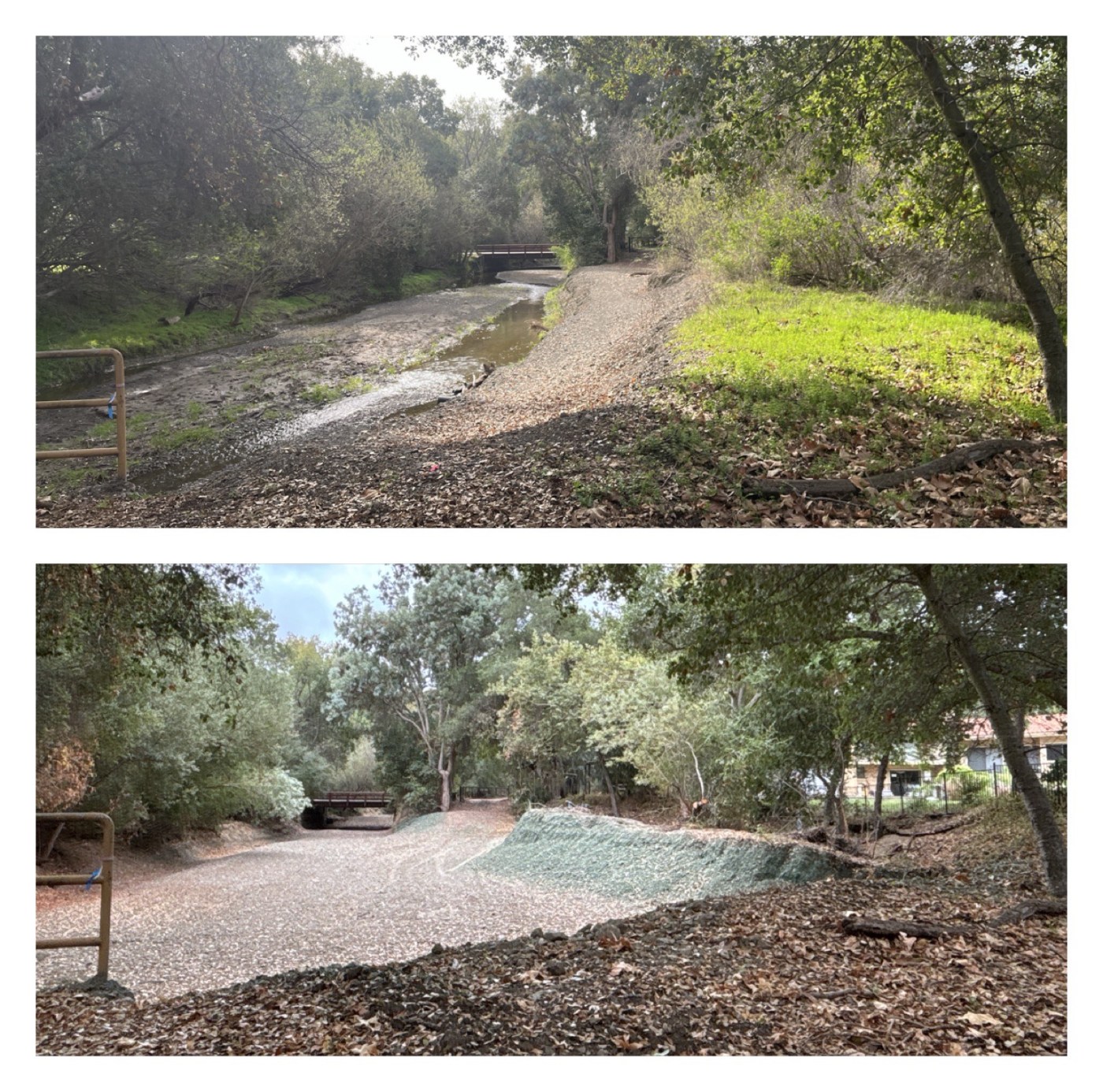Santa Clara County’s creeks wind through neighborhoods, parks, commercial and industrial areas, and open spaces, carrying stormwater from the hills to the San Francisco and Monterey bays. When rain arrives, these waterways must be able to handle fast, sustained flows without threatening nearby homes and businesses. Keeping them ready takes year-round planning, ongoing maintenance and the dedication of Valley Water crews.
Our county has more than 800 miles of creeks, and Valley Water manages about 333 miles of those streams. Each year, our Stream Maintenance Program employees inspect and prioritize sections of these waterways for maintenance projects. We focus especially on creeks that have engineered flood protection projects in place, ensuring they continue to safeguard nearby homes and businesses.
From June through October, crews remove sediment, manage overgrown vegetation, clear trash and debris and stabilize eroded banks. While summer is the busiest season, stream maintenance never truly stops. After storms, staff inspect stream conditions, and as the rainy season winds down, we prepare for the next round of projects. Most major work occurs between June 15 and October 15, although extensions may be granted when projects need more time. Other efforts, like minor maintenance and vegetation management projects, can happen year-round.
Our work generally falls under one of four categories:
Bank protection: High and sustained water flows can cause extensive damage to creek banks, eroding existing flood protection improvements and natural elements. Repairing creek banks also helps protect neighboring homes and property from damage.
Sediment removal: Sediment and debris washed downstream can restrict the flow of water in some areas. During a heavy storm, these areas of restricted flow could cause water to back up, increasing the risk of flooding. Crews remove sediment to allow stormwater to flow through the creeks as designed.
Vegetation management: Valley Water manages over 3,000 acres of vegetation in Santa Clara County. Valley Water selectively removes instream vegetation to maintain flows in streams and riparian corridors. We manage vegetation near streams for maintenance access and fire code compliance, especially critical given the county’s cyclical dry conditions, winter rains promoting vegetative growth, and the ongoing challenges of climate change. Invasive plant species are also controlled to improve ecological health.
Riparian planting: Planting along creek corridors enhances habitat for birds, fish, amphibians and other wildlife. Our riparian planting program compensates for the unavoidable riparian impacts created by sediment removal, bank stabilization and vegetation management activities.
Our crews worked on many Stream Maintenance Projects across Santa Clara County this season. Some of the projects in my district included:
Bank protection on Regnart Creek downstream of Antoinette Drive in Cupertino;
Bank protection on Saratoga Creek upstream of Bollinger Road in San Jose;
Sediment removal on San Tomas Aquino Creek upstream of Westmont Avenue in San Jose; and
Sediment removal on Calabazas Creek downstream of Comer Drive in Saratoga.
Additional information can be found at valleywater.org/project-updates/stream-maintenance-program.
Valley Water is limited in the type of work that can be done on natural channels without completed flood protection projects. Without careful planning, altering these creeks could unintentionally harm habitat or redirect floodwaters toward homes and businesses.
The Stream Maintenance Program is supported in part by the voter-approved Safe, Clean Water and Natural Flood Protection Program. Thank you for your continued investment in community safety.
Nai Hsueh represents Valley Water’s District 5, which encompasses the cities of Cupertino and Saratoga, parts of Central and South Sunnyvale and parts of Southwest San Jose. Contact her at [email protected].





